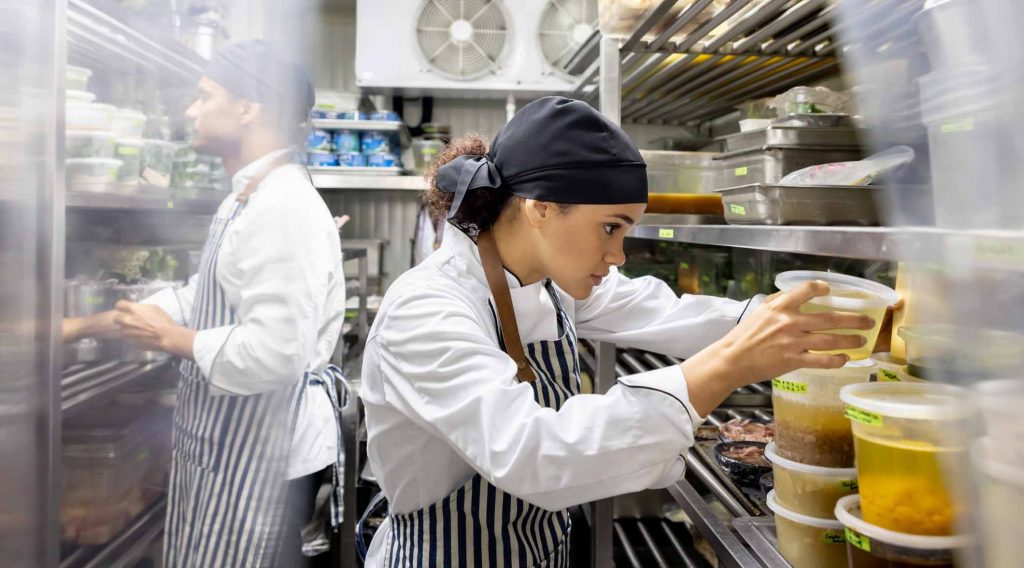
Every year the National Restaurant Association releases its anticipated What’s Hot list of trends, compiled through an extensive survey of top chefs and other members of the American Culinary Federation.
This year, the same overarching “trends” topped the list yet again for the second, third and even fourth time in a row, indicating they’re becoming more perennial and mainstream.
“We’re still seeing the same, evolving ‘trends’ local sourcing, eco-friendly food, sustainable sourcing and seafood, and healthy kid’s meals,” says Annika Stensson, director of marketing for the Association.
In terms of healthy kid’s meals, fruit sides, salads and dishes using whole grains continue to take favour nationwide, but restaurants have also begun to step up that part of the menu, offering smaller versions of adult favourites that kids might also like.
“We’re seeing a move toward more gourmet, more sophisticated dishes, not just a healthier version of a hot dog,” says Stensson. This is playing out more among independent restaurants, but fast casual concepts have toyed with kid-friendly sushi, for example.
Gluten is also becoming less of a “trend,” and more of a perennial favourite, aka, finding a place on most menus these days. “People still seem to believe it’s healthier to avoid gluten and a lot of low-carb diets cut out gluten,” Stensson says.
Other perennial favourites, according to the survey, include fried chicken (63 percent), biscuits (62 percent) and barbecue (62 percent). Even frying seems to be more widely accepted as a cooking method (60 percent). French toast, pulled pork, tea comfort foods, and strangely enough, zucchini, also made that list.
Housemade and artisan
“Most of the real action this year are in spots 10 through 20 on the list,” Stensson says.
Those include “drilled-down” versions of the artisan/local food “trend” in the form of housemade condiments and other items restaurants find are easy to make themselves. Call it “hyper-local” or just a back-to-basics, higher form of scratch cooking.
Housemade sausage, in fact, took No. 17 on the overall list with 67 percent of respondents pointing to it as a hot trend, and it took the first slot on a shortened list of new top trends for 2016. Housemade pickles took the No. 18 spot, likely as more chefs experiment with pickling at the end of the summer to preserve the harvest year-round a trend.
And housemade/artisan ice cream gained took the top spot on the dessert hot list (10th overall) while also gaining 5 percentage points to become a “mover and shaker” for 2016. “Ice cream is something relatively easy to make and chefs are finding they can put their own signature stamp on those creations,” says Stensson.
Ethnic spices and condiments
Ethnic flavors continue to take top billing on the What’s Hot list this year, but specifically, ethnic condiments and spices
Some say gochujang, a Korean chili paste, is the new sriracha, which has already becoming the new ketchup in some circles. Other easily housemade condiments like North African harissa, Jamaican jerk and custom barbecue spice blends continue to grow in popularity nationwide.
“We’re seeing more growth in African and Middle Easter flavors,” Stensson says. “African flavors in particular gained 20 percentage points this year in terms of becoming a hot trend.” Stensson points to the growing popularity of Ethiopian cuisine as a possibility for this change. Middle Eastern flavors as a hot trend gained 11 percentage points this year.
Beverage and spirits
Locally-produced spirits continue to flourish with the advent of small batch distilleries popping up nationwide, according to Stensson.
In addition, Asian liquors, such as Japanese whiskey, are growing in popularity.
At the restaurant level, onsite, barrel-aged cocktail drinks are taking centerstage at the bar and took the No. 1 position on the top beverage trends list followed by culinary cocktails; regional signature cocktails; food-beer pairings, and edible cocktails.
On the non-alcoholic side, more restaurants are making their own ginger beer as well as house-carbonated sodas infused with natural fruits and herbs, Stensson says. Even mocktails continue to gain traction.
Chef-driven fast casual
Listed as the No. 1 hot trend for 2016, chef-driven fast casual concepts are becoming less of an anomaly as independent restaurants and restaurant groups find they can generate alternative revenues by offering chef-quality food at more affordable prices in more casual, convenience-focused settings.
Stensson points out Jose Andres’ fast-casual, veggie centric Beefsteak, which opened last year in Washington D.C., offering a variety of vegetable-grain bowls like the Kimchi-wa with rice, Asian vegetables, kimchi and crunchy, toasted sesame seed garnish. And then there is Bobby Flay’s Bobby’s Burger Palace and the rapid expansion of Danny Meyer’s Shake Shack.
Other chefs and food professionals are playing outside the restaurant box by delving in home delivery meal businesses popping up in urban markets across the nation. And pop-ups continue to gain traction as chefs transition between restaurants, try out new potential concepts or collaborate with other chefs for special dinners.
“The pop-up trend started out similar to food trucks – as a trial of new concepts if you don’t have enough capital, but it has since been evolving for some time,” Stensson says. “In the past pop-ups were more financially-driven but now it’s more about experimentation and they can be really successful.”
Amelia Levin




